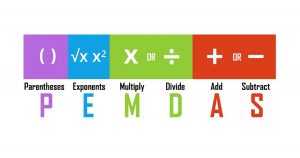In this article, we are going to learn about How Many Sides Does a Pentagon Have? Lets us begin.
Everyone is well-acquainted with a few common shapes present around us, like square, rectangle, circle, triangle, and more. But do you know that its name also changes as the number of sides increases in shape? One of those fascinating shapes is the Pentagon.
The word Pentagon is derived from a Greek word, pente, meaning five sides or a five-sided polygon. So, whatever the object is, if it possesses five sides or five angles or corners, it can be termed as a pentagon. Want to know more about this new shape? Continue reading further to learn more.
How Many Sides and Angles does a Pentagon have: Do you know?
The universal fact is that a pentagon has five sides, five corners, and five interior angles. It is a flat and enclosed shape, meaning no sides are curved and joined. If these sides and angles are equal, it is known as a regular pentagon. A regular pentagon possesses a rotational symmetry (of orders 72°, 144°, 216°, and 288°) and five lines of reflectional symmetry. If a regular pentagon is seen in a mirror from each of its corners, it will look the same.
Then, how many parallel sides does a pentagon have? None. A pentagon has no parallel or perpendicular side. Coming to the next question, how many equal sides does a regular pentagon have? All of them. A regular pentagon has all its five slides of equal length. A pentagon can be self-intersecting, meaning its edges cross each other. If one joins the lines across an edge, it will intersect with the other edge.
Talking about angles, one might have a query regarding the angles of a pentagon. Since the sum of angles inside a polygon equals 360 degrees and the number of angles in a pentagon is five. Therefore, a regular pentagon has an interior angle equal to 108 degrees. Furthermore, the exterior angle equals 72 degrees. But do all pentagons have the same value of their sides and angles?
Types of Pentagon
Does every Pentagon look the same? Each Pentagon has five sides, so how can they look different? First, to qualify as a pentagon, five sides are a must and five angles. However, all these sides and angles are different in every Pentagon. That is where pentagons differ. As a consequence, types of pentagons based on sides and angles are listed below:
Regular Pentagons
How many sides does a regular pentagon have? Always five! In regular pentagons, all the sides are equal in length and have equal angles. The shapes having equal angles are called equiangular. Since the sum of interior angles of a polygon equals 360 degrees. Therefore, each internal angle of a regular pentagon is 108 degrees. Moreover, all the sides have equal length.
The angle formed between two lines joining two consecutive corners in a pentagon to the center is 72 degrees.

The Pentagon, whose angles or sides are unequal, is known as an irregular pentagon.
Concave and Convex Pentagons
In a convex pentagon, all the five angles are pointing towards the exterior, i.e., if the corners of the Pentagon are joined, they will form a circle outside the shape. Whereas in a concave pentagon, all the corners point inside the Pentagon, within a circle, i.e., if the inner corners are joined, they will form a circle inside. The diagonals of a regular convex pentagon are in the golden ratio to its sides.
Equilateral Pentagons
Those pentagons whose sides are the same but angles are not the same.
Cyclic Pentagons
Those pentagons that can be circumscribed in a circle, where corners touch the circle, are called cyclic pentagons. These may look like a regular pentagon, but they are not so.
List of Other Polygons
After understanding how many sides and angles a pentagon has, do you know there are dozens of different polygons nomenclature on their number of sides? No? Then, a few of them are listed below:
| Polygon | Number of Sides |
| Triangle | 3 |
| Quadrilateral | 4 |
| Pentagon | 5 |
| Hexagon | 6 |
| Heptagon | 7 |
| Octagon | 8 |
| Nonagon | 9 |
| Decagon | 10 |
| Hendecagon | 11 |
| Dodecagon | 12 |
| Tridecagon | 13 |
| Tetradecagon | 14 |
| Pentadecagon | 15 |
| Hexadecagon | 16 |
| Heptadecagon | 17 |
| Octadecagon | 18 |
| Nonadecagon | 19 |
| Icosagon | 20 |
| Triacontagon | 30 |
| Tetracontagon | 40 |
| Pentacontagon | 50 |
Pentagon in Nature
The Pentagon is a common polygon that can be seen in nature if observed. Here are a few examples where Pentagon can be found in nature:
- In vegetables, okra possesses a cross-section in the shape of a pentagon.
- Like many other flowers, morning glories also possess a pentagonal shape.
- The gynoecium of an apple is pentagonal, containing five carpels arranged in the shape of a five-pointed star.
- The star fruit has a fivefold pentagonal symmetry.
- A starfish or sea star and many echinoderms have pentagonal symmetry.
- The endoskeleton of a sea urchin is pentagonal.
- The faces of a Ho-Mg-Zn icosahedral quasicrystal are pentagonal.
- A pyritohedral crystal also possesses twelve identical pentagonal faces.
Area of a Pentagon
After knowing what a pentagon is, do you know its area? Or how to find the area of a pentagon? First, let’s see what an area is. The area is the bounded region of any polygon. In simpler terms, the space enclosed within the sides of a polygon is known as its area. In the Pentagon, the area is given by:
A = 5/2 x s x a, where s is the side length, and a is the apothem length.
The apothem is the distance from the center of the Pentagon to the center of each side.

In the case of a regular pentagon, i.e., whose sides are equal in length, the area is denoted by:
A = ¼√5(5+2√5)s², where s is the length of the side of the polygon.
Then which formula should we use to find the area? Based on the data provided in the question, a suitable formula, from those mentioned above, can be used to find the area of a pentagon.
Perimeter of a Pentagon
After learning how to find the area of a pentagon, it is time to jump over the perimeter. The perimeter of a polygon is the sum of its sides. That means the boundary of any shape will denote its perimeter. Similar is the case with the Pentagon. Since it possesses five sides, the perimeter will be the sum of its five sides.
Learn more about pentagons by examples
| Example 1: Find the unknown angle in the given figure.
Solution: We must know that in a polygon, the sum of angles is given by 180 (s – 2), where s is the number of sides. Since now we know how many sides a pentagon has, finding the sum of angles of a pentagon will be easy. Here, sides of a pentagon = 5. Therefore, the sum of angles in a pentagon is 180 (5 – 2) = 180 x 3 = 540 degrees. From the given diagram, the sum of angles is 160 + 55 + 130 + x + 145. This value will be equal to 540. Therefore, 540 = 160 + 55 + 130 + x + 145. On solving for x, we get x = 50 degrees. This is the value of the unknown angle. Example 2: What is the area of a pentagon of side 5 cm and apothem length of 2 cm? Solution: We are aware that the area of a pentagon is given by, A = 5/2 x s x a, where s is the side length, and a is the apothem length. Therefore, the area of the pentagon for the given length and side is A = 5/2 x 5 x 2 = 25 cm2. Example 3: Find the area of a regular pentagon whose side length is 10 cm. Solution: When one of the sides of the regular Pentagon is available, the area is given by, A = ¼√5(5+2√5)s², where s is the side length of the regular Pentagon. Therefore, the area with side 10 cm = ¼√5(5+2√5)10²= 172.04 cm2. Example 4: What is the perimeter of a pentagon whose lengths are 4 cm, 5 cm, 4 cm, 5 cm, and 8 cm? Solution: The perimeter of any polygon is the sum of its five sides. A pentagon is also an enclosed polygon whose perimeter will be the sum of its sides. Therefore, the perimeter of the pentagon is given by 4 + 5 + 5 + 4 + 8 = 26 cm. |

Relevant Articles
Public vs Private Colleges – Which is better for you?
With approximately 4,300 colleges and universities in the United States, …
Public vs Private Colleges – Which is better for you? Read More »
Read More >>How to Use an Abacus for Basic Math Operations?
In this article, we’ll learn about how to use an …
How to Use an Abacus for Basic Math Operations? Read More »
Read More >>Allusion Definition and Examples
An allusion is a short reference to a person, object, …
Allusion Definition and Examples Read More »
Read More >>PEMDAS: What Does It Mean and Why Does It Matter?
In mathematics, the order of operations is important to solve …
PEMDAS: What Does It Mean and Why Does It Matter? Read More »
Read More >>





















Comments: